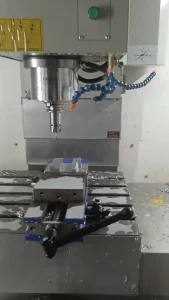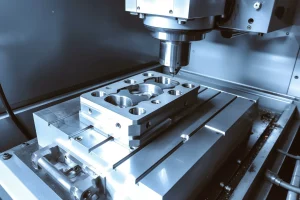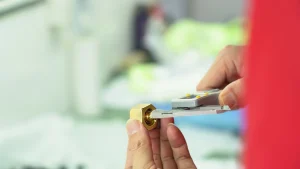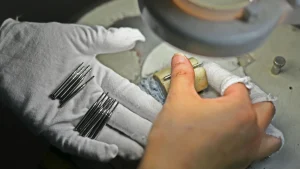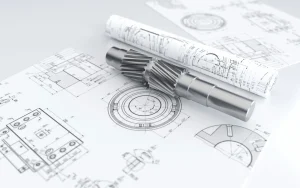随着工程和机械的技术进步和革命, you want to know you’re using the best equipment to advance your business. Some of these advancements are computer numerical control (数控系统) machining and 3D printing. They both utilize different materials.
CNC machining and 3D printing have similarities and differences, 各有独特优势. There are different situations in which you might want to use each, based on cost and availability. Breaking down each manufacturing style will help you choose the best method for you and your business.
Their primary differences lie in production, waste, 规模, material availability, and part size.
Similarities between CNC Machining and 3D Printing
CNC machining and additive manufacturing are both computer-controlled solutions that can create products from specific materials. They are both cutting-edge machines that build products safely and efficiently.
When machinists and engineers want to build prototypes, parts, or custom products, they can turn to one of these machines to do the work for them. As long as the machine is designed, you don’t have to worry about human error because it’s automated. While this doesn’t mean problems won’t occur, there’s greater consistency in production and a lower likelihood of injury. There is some overlap between these two manufacturing methods. Some CNC machines can use STL and OBJ files, which 3D printers also accept.
CNC machining is older than 3D printing and still has a stronger foothold in manufacturing. The form dates back to the 1940s and has been shaped to adapt to the industry to date. 3D printing emerged in 1986. It is still relatively new and continues to evolve, becoming more accessible and versatile. 3D printing can help in certain areas of prototyping, but it is not a replacement tool for CNC machining.
They are not replacements for one another because they are both aspects of manufacturing. They meet different needs and handle different materials and markets. CNC machining and 3D printing both have unique capabilities and constraints that make them suitable for specific jobs. Because they each cater to niches within the market, you need to compare them to your industry.

The Difference Between CNC Machining and 3D Printing
From their construction methods to the applications they can handle, CNC machining and 3D printing offer creative solutions in a variety of different ways. Identifying their differences and advantages will help you find the right one for you and your business.
3D printers are generally more material-efficient than traditional manufacturing. Printers use the material that makes up the item they’re creating, while traditional manufacturing methods, such as CNC machining, require more material to make the mold work. On average, 3D printers produce less waste than traditional manufacturing methods.
然而, when production is scaled up, traditional manufacturing methods have a clear advantage. Because printers build layer by layer, assembly lines and CNC machining are faster and more cost-effective than 3D printers for mass production. Assembly lines can mass-produce hundreds of identical products in the time it takes to 3D print a product.
此外, 3D printers can only use the area of the print bed to create parts. Large parts may not fit within this space. While it’s possible to break these parts down into smaller components that the 3D printer can build, this may not be cost-effective and takes time. Traditional manufacturing has the advantage of assembly line labor and the ability to produce items at a larger scale. Future 3D printers will be able to create larger products, but not at the quality and quantity of CNC machines.
3D printers can manipulate different materials, such as plastics, 金属, and polymers. 然而:
- Not all 3D printers can work with these materials. Each material requires a separate machine.
- Due to limitations in current technology and high melting points, 3D printers still cannot match the full material range that traditional manufacturing can handle.
If a project requires a specific material incompatible with your printer, you might not consider using a 3D printer.
Here’s the Bottom Line
3D printing will not replace traditional manufacturing in the foreseeable future because it has shortcomings in mass production and material flexibility. 反而, it complements CNC machining by excelling in prototyping, 复杂的几何形状, and small-batch customization, while CNC machining remains superior for high-precision, large-scale, and strength-critical parts.

